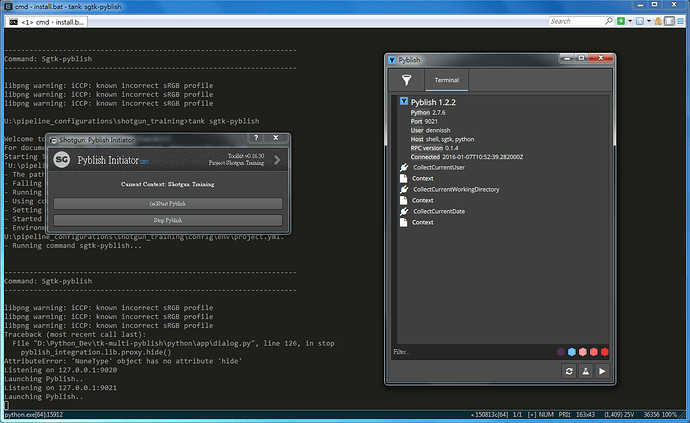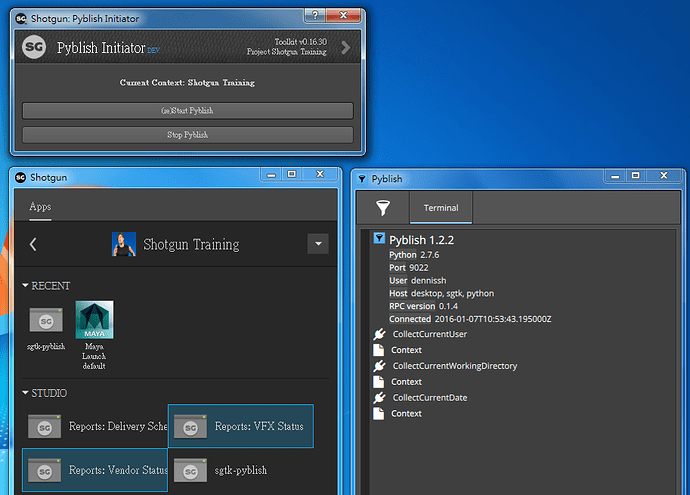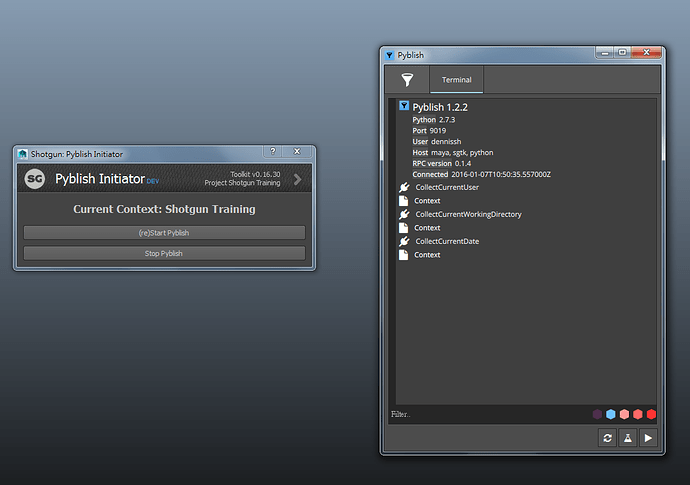Hmm, I think there is some confusion here about the role of the GUI.
Technically, the GUI isn’t running under any of the hosts, like Maya, Nuke or even FTrack. The GUI runs as an individual process (via subprocess), unbound by any other, much like how Maya itself runs.
Practically, you could launch Pyblish QML standalone, and let it run in the background. Then, a host such as Maya would connect with it when it comes time to publish. In fact this is the recommended workflow.
To get a better understanding of this workflow, I would suggest you launch Pyblish QML this way.
# From any shell
$ python -m pyblish-qml
This will launch QML, oblivious to Maya or Shotgun or what not.
And then, connect to it from a host, such as Maya, when it comes time to publish.
# In the Maya Script Editor
import pyblish_maya
# Start listening for commands coming from Pyblish QML
pyblish_maya.setup()
# Talk to Pyblish QML
pyblish_maya.show()
So, the general workflow, whether you use Maya, Ftrack, Shotgun or anything else, is to start Pyblish QML independently, preferably at start-up of the operating system, and then connect independently.


